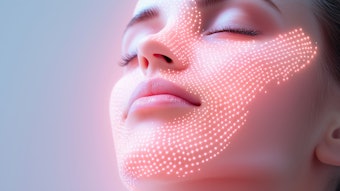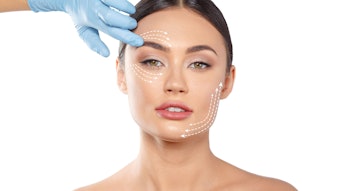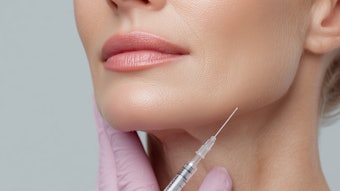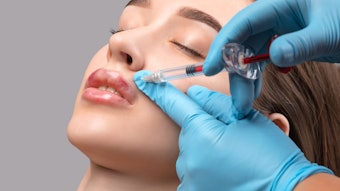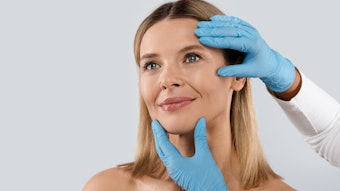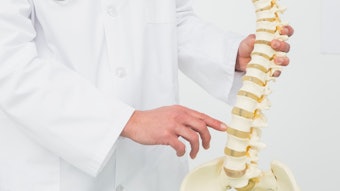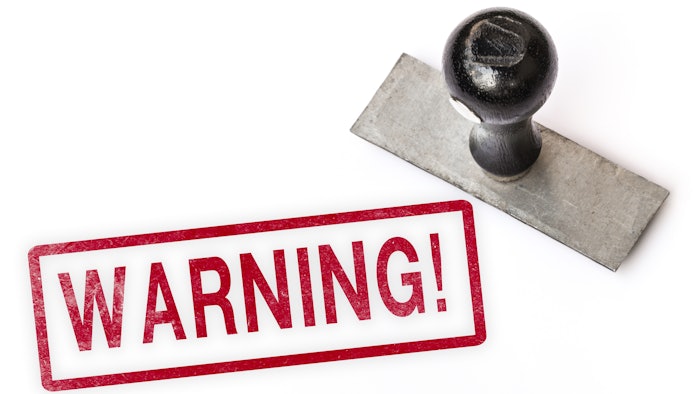
On October 8, the U.S. Food and Drug Administration issued a safety communication warning patients and health care professionals not to use needle-free devices for the injection of dermal fillers.
The communication is as follows:
The U.S. Food and Drug Administration (FDA) is warning the public and health care professionals not to use needle-free devices such as hyaluron pens for injection of hyaluronic acid (HA) or other lip and facial fillers, collectively and commonly referred to as dermal fillers or fillers.
The FDA is aware of serious injuries and in some cases, permanent harm to the skin, lips, or eyes with the use of needle-free devices for injection of lip and facial fillers.
Recommendations for Consumers
- Do not undergo any filler procedure with needle-free devices.
- Do not buy or use lip or facial fillers sold directly to the public.
- Do not inject yourself or others with lip and facial fillers using any device. FDA-approved dermal fillers are indicated for prescription use only.
- If you experience any problems or are concerned after injection of lip or facial fillers using a needle-free device, seek care from a licensed health care provider.
- Report any problems experienced after using needle-free devices for injection of fillers to MedWatch, the FDA Safety Information and Adverse Event Reporting program.
- If you are considering a filler procedure, talk to a licensed health care provider about the procedure using an FDA-approved dermal filler. Dermal filler procedures should only be performed by licensed health care providers.
Recommendations for Health Care Providers
- Be aware that needle-free devices for injection of dermal fillers are not approved by the FDA.
- Do not perform any aesthetic filler procedures with needle-free injection devices.
- Do not use injectable filler products that are not FDA-approved dermal fillers.
- Do not transfer FDA-approved dermal fillers into needle-free injection devices.
- Be aware that FDA-approved dermal fillers are supplied by prescription for injection by a licensed health care provider using a syringe with a needle or cannula.
- If you encounter a patient who has experienced adverse effects from a procedure that involves the use of needle-free devices to inject fillers, please consider filing a report through the FDA’s voluntary reporting webpage, MedWatch, the FDA Safety Information and Adverse Event Reporting program.
Device Description
Needle-free injectors are handheld devices or “pens” that use high pressure to force substances, such as fillers, into the body. The substances loaded in the pens are typically sold separately.
Risks Associated with Needle-Free Devices Used to Inject Lip and Facial Fillers
The FDA is aware that needle-free devices, and lip and facial fillers for use with these devices, are sold online directly to the public, and their use is promoted on social media to increase lip volume, improve the appearance of wrinkles, change the shape of the nose, and other similar procedures.
The FDA has not evaluated the safety and effectiveness of needle-free devices for injection of any dermal filler. The FDA also has not approved the marketing of needle-free devices for injection of these products.
FDA-approved dermal fillers are intended for prescription use only and for use with a syringe with a needle or cannula (a small flexible tubing with a blunt tip that is inserted under the skin).
Needle-free injection devices for aesthetic purposes do not provide enough control over where the injected product is placed. Lip and facial filler products sold directly to consumers online may be contaminated with chemicals or infectious organisms.
Additional risks may include:
- Bleeding or bruising
- Infection with bacteria, fungus, or virus from the filler or needle-free device
- Transmission of disease between people who use the same needle-free device
- Blockage of a blood vessel, leading to tissue death (necrosis), blindness, or stroke
- Scarring
- Damage to eyes from the pressure of the needle-free device
- Formation of lumps in the skin
- Discoloration of the skin
- Allergic reaction
Complications may require immediate medical attention by a licensed health care provider. Some complications may not be reversible.
FDA Actions
The FDA is monitoring reports of adverse events associated with needle-free devices for injection of fillers and will update the public if significant new information becomes available.
Marketing of prescription medical devices for purchase without a prescription is prohibited and may be subject to civil or criminal penalties. The FDA continues to evaluate marketing of needle-free devices for injection of fillers and will take action, as necessary.
Reporting Problems with a Device
If you think you had a problem with needle-free devices for injection of fillers, the FDA encourages you to report the problem through the MedWatch Voluntary Reporting Form.
Health care personnel employed by facilities that are subject to the FDA's user facility reporting requirements should follow the reporting procedures established by their facilities.
